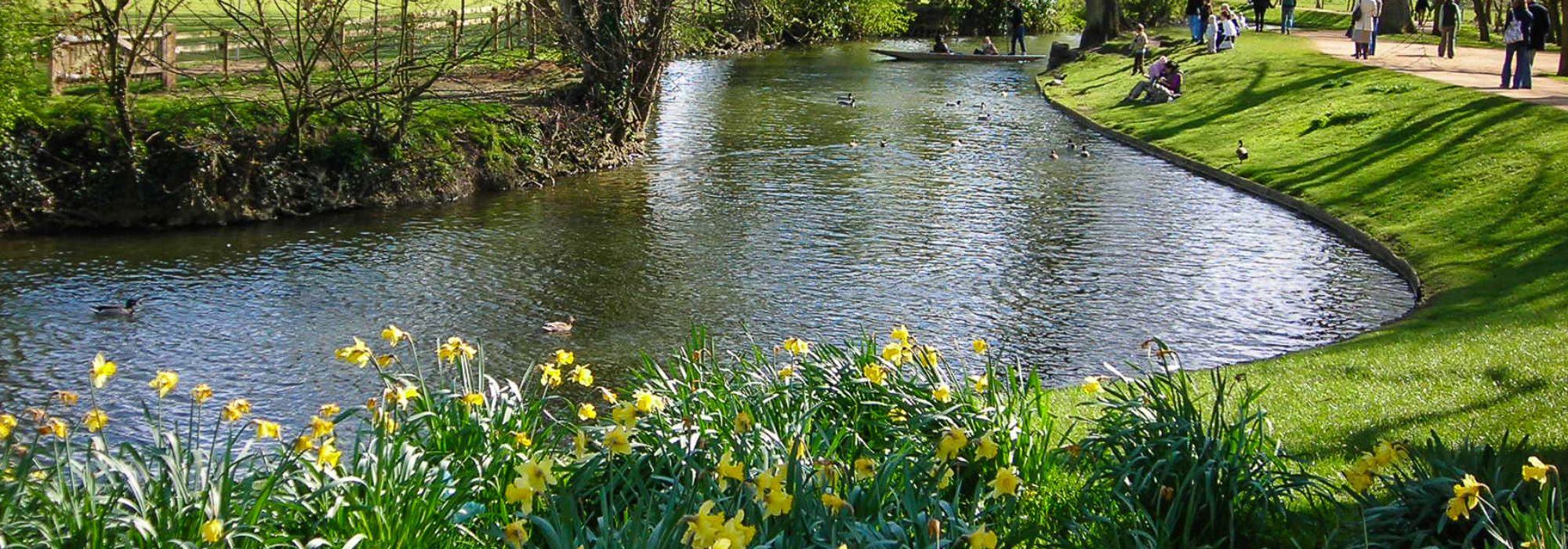How open data can rescue rivers
You do not have to look far in the media to know that our rivers are in crisis: at the last assessment, only 15% of rivers in England were deemed ecologically healthy, and in the Thames Basin, this number is even lower at 6%. Rivers are beset by multiple problems, from drought and flooding to pollution from sewage, agriculture and road run-off, to emerging chemicals and antibiotic resistance.
At the same time, in the last few years there has been a recognition of the importance of rivers in peoples’ lives. This is especially true for landlocked Oxfordshire: we use our rivers for fun, to swim, paddle and play, relax and socialise. They’re important for tourism and our economies, especially in the warmer months. 70% of our drinking water comes from the Thames, and recent and frequent floods and droughts have brought the effects of climate change to our doorsteps. Most of our towns and cities would simply not exist without rivers! Simply put, the river connects us all.
However, information about, and regulation and governance of our local rivers, streams and waterways is fragmentary. Information about our rivers is stored in many different places, with varying levels of accessibility. New actors, such as citizen scientists, charities and campaign groups are on the scene, to challenge the regulators, water companies and academics. Nobody seems to have an overarching joined-up vision for rivers. People want to know who to trust, to believe, and what is happening in their rivers. Most importantly, they want to know: when will it get better?
Open data has been crucial in recent campaigns, both in the Thames Basin and nationally, for improving river water quality. The issue of raw sewage in rivers only became so newsworthy because open data on sewage spills, helpfully compiled and visualised by the Rivers Trust, made people aware of the scale of the problem. However, there are large gaps in data as well, both in space and time, as budgets for river monitoring have been slashed in the last decade. There are some pollutants which are monitored rarely or not at all: bacteria harmful to human health is only monitored at three sites nationwide, and then only after long campaigns.
The Oxford Rivers “Living Lab” is a project which aims to bring together disparate data and people for better understanding and governance of Oxfordshire’s rivers. The project is a collaboration between the UK Centre for Ecology and Hydrology (UKCEH), Thames21 and The Rivers Trust.
The first part of the project involves developing a new digital tool (for example, an online map or an app) which will integrate different data “streams” on the rivers in and around the Oxford area. We want this tool to be easy to use, accessible, and useful to as many people as possible – from a dog-walker with a casual interest, to recreational river users, to local politicians and decision makers, to the CEO of Thames Water. We want it to not only help people understand what’s going on beneath the surface, but also to provide easy signposts towards getting involved with caring for and improving rivers.
This living lab is part of the larger GOVAQUA project, a Europe-wide project exploring and developing sustainable river governance funded by the European Union. There are five other “living labs” across the continent, all focused on different issues and solutions: from finding ways to fairly share water during drought conditions in southern Spain, to restoring rivers for nature in the Danube Delta, Romania.
Keep an eye out for the Oxford Rivers information tool which will go live in May.
Would you like to see more open data for rivers in your local area? Check out Thames21’s other open data projects, like our road run-off map. You can also find out the ecological status of your nearest river on the Rivers Trust website here. Or get in touch with claire.robertson@thames21.org.uk to find out more about the Oxford Living Lab.
